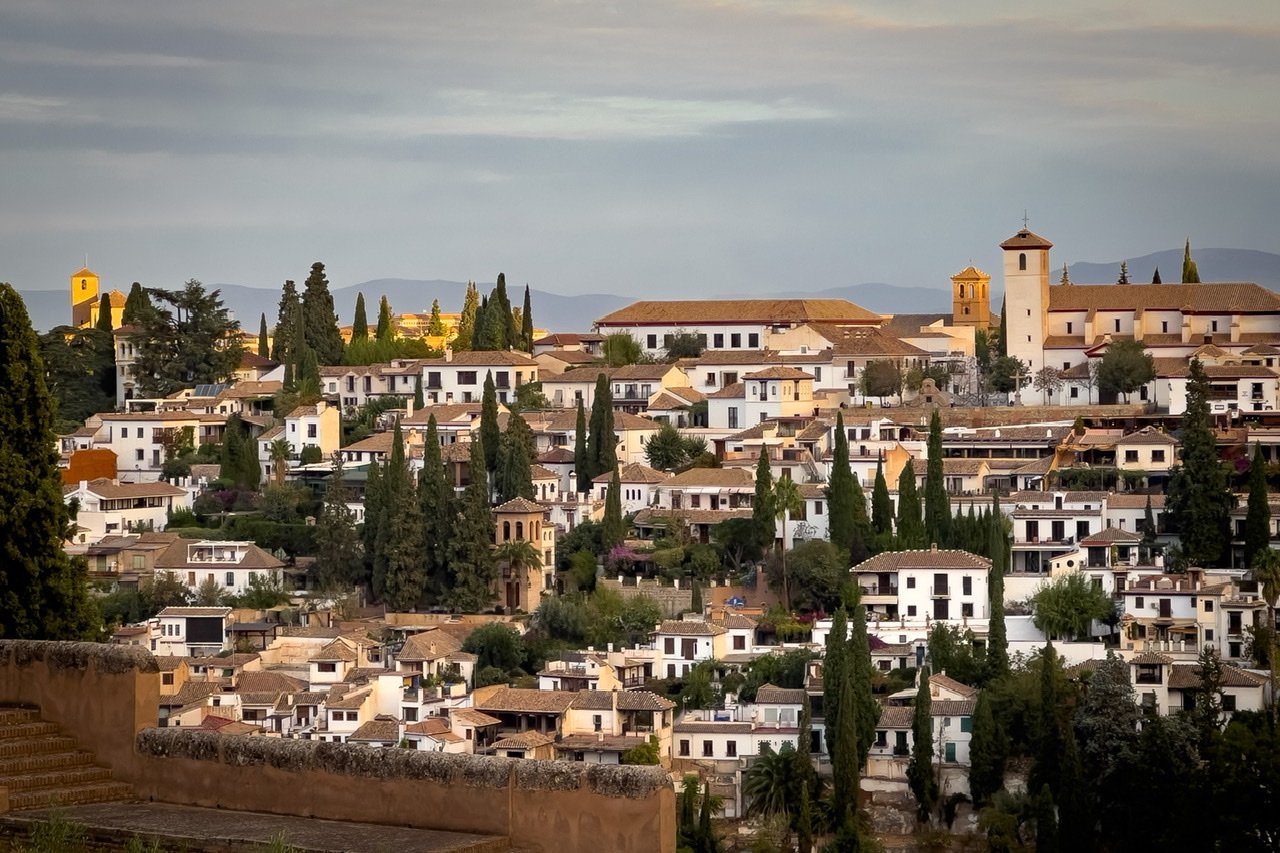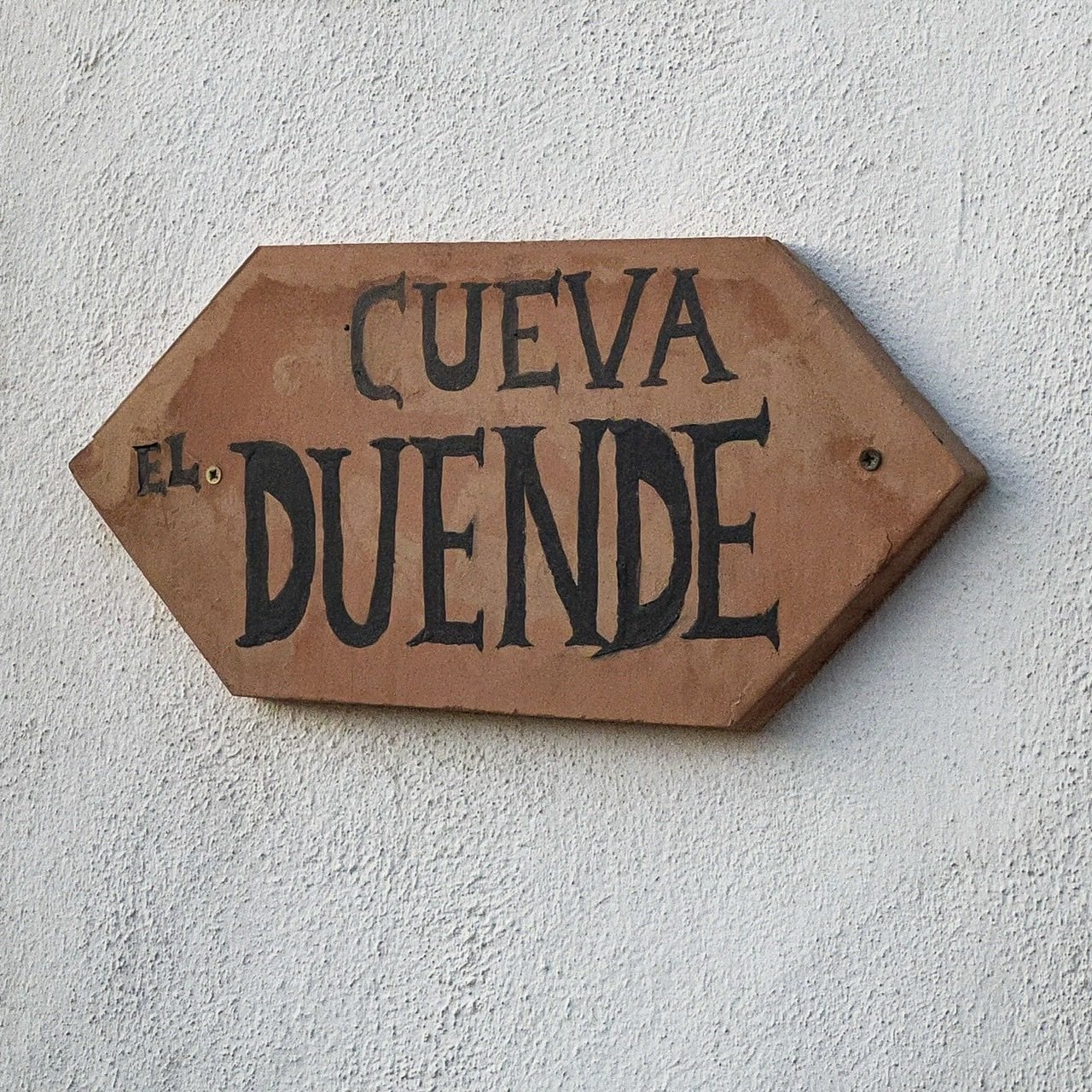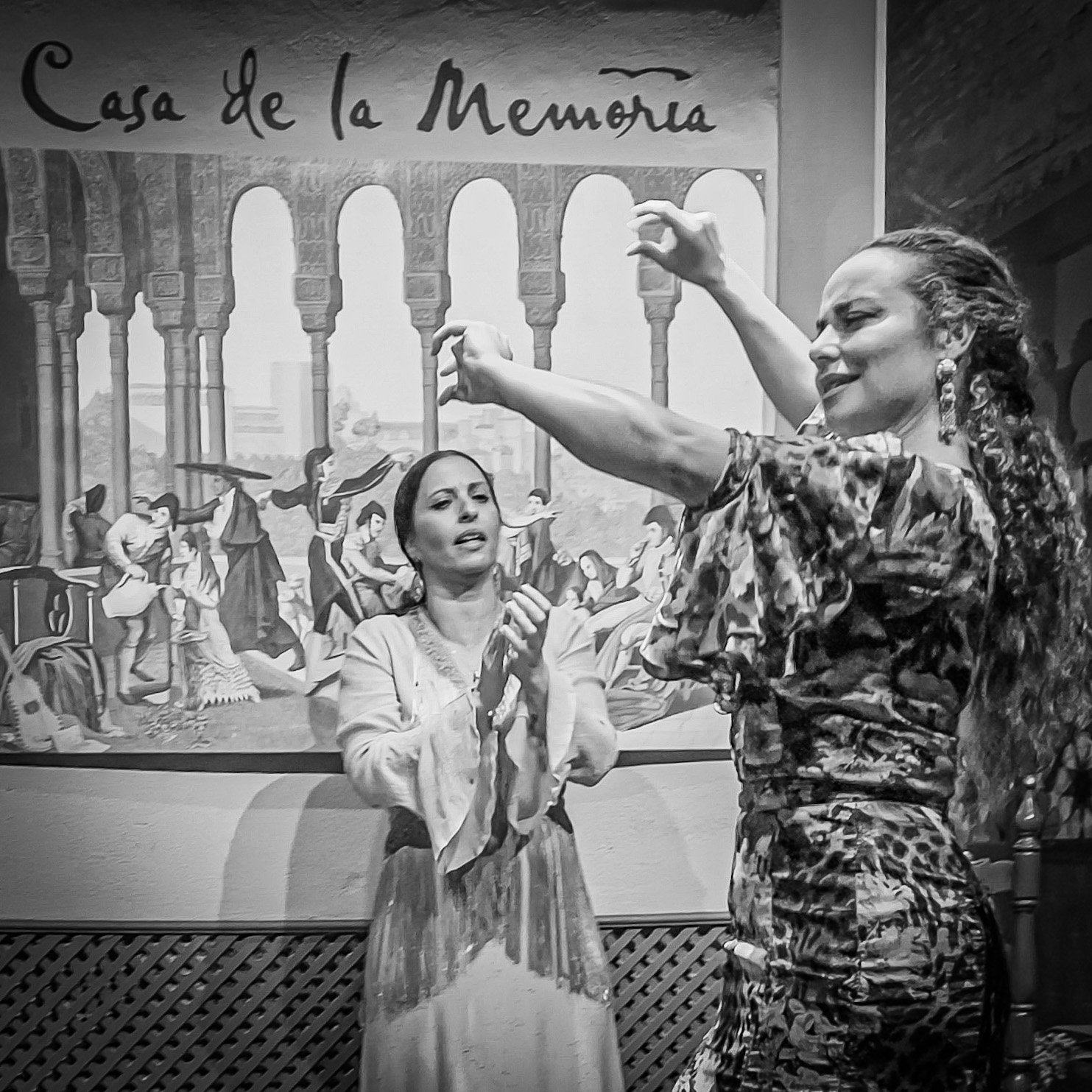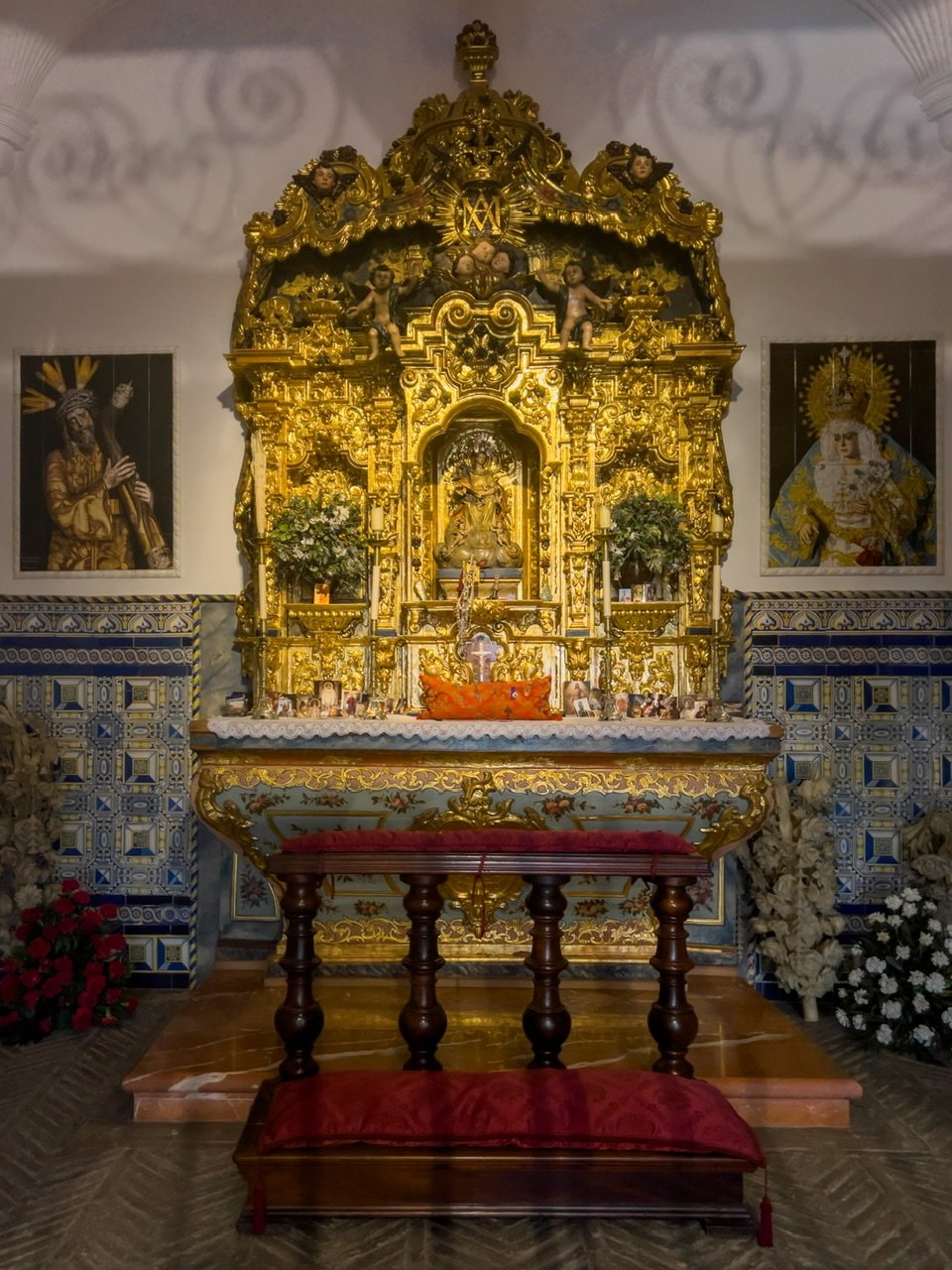A glimpse of Duende: irrational, earthy, deathly, and a dash of the diabolical.
“Duende is a powerful, earthy, creative force that can be tapped into, but never controlled. … Duende is a fire that will, at whim, burn through us if and when we acknowledge that we are not the creators but the channel through which inspiration passes.”
We climb up the uneven cobblestone steps, along twisting narrow roads that cling to the hillside overlooking the magnificent Alhambra in Granada. We’re in Sacromonte where Gypsy families settled outside the city walls in cave dwellings centuries ago. It is in neighbourhoods like this across southern Spain where Gypsy, Moorish and Spanish cultures mixed with a life of abject poverty, discrimination, hope and passion.
One of the houses on the hill is named Casa Duende. I had vaguely heard of the term before but it is this house, in this neighbourhood of cave dwellings that begins my journey to better understand the Spanish word that is not easily translated to English. Duende is uniquely Spanish and a key, I think, to appreciating the beauty and depth of the culture.
Online you can find the definition of Duende to include some of the following phrases:
A heightened state of emotion and authenticity in response to a piece of art
A power, not a behaviour
Touched by a muse
It’s a term that tends to capture the authenticity that comes from people whose lives are full of hardship, sorrow, yet also joy and connection. Lorca, a Spanish poet from the 30’s, identified four elements of duende: irrationality, earthiness, a heightened awareness of death, and a dash of the diabolical.
Duende is not something you can “make happen” or even count on, that’s part of the mystery. As a traveller, I was aware that I couldn’t personally experience Duende myself but hoped that I could “see it” as part of contemporary Spain. And I think I have, or at least have been gifted a glimpse.
Duende in Flamenco
The exact origin of Flamenco invites considerable rivalry between cities across southern Spain’s Andalusia. Yet there is a common appreciation that its collective origin lies in the caves of Sacromonte, and the poor neighbourhoods of Triana in Sevilla and San Fernando in Cadiz. Flamenco was born amidst the abject poverty that existed in these communities from the 15th century until well into the 1960’s and 70’s. Flamenco brings together acoustic guitar, singing, chanting, dancing, foot stomping and hand clapping. A Flamenco artist performs with fervor and channels Duende.
Here’s my experience:
In an intimate tablao, on stage is a guitar player, a singer and two dancers. From the moment the artists arrive on stage I can tell it is not like any performance I’ve ever seen. It doesn’t matter that I don’t understand a word said or sung because it is the emotion that is the product of Flamenco. The songs are soulful and deeply rooted in Flamenco tradition. It is sultry and passionate, assertive and hopeful and firmly grounded in painful struggle.
I’m confident that songs and dances are somewhat choreographed, however the Flamenco artists are genuinely semi-improvising. The guitar player watches the other performers intensely and adjusts his rhythm, song and pace based on whatever they are bringing forward. Their eyes are closed, faces with almost tortured expression. Each song takes some time as the artists seem to wait, feeling the rhythm, being open to what strikes them… and then erupts with expression and movement. The artists encourage each other and you can see genuine smiles and energy when one of them has “found” their magic or Duende.
I was not really expecting to get emotional - but I did. The percussive nature to the dance (stomping and wildly amazing foot patterns) along with incredible guitar playing fully captivated me. I would say that the Flamenco artists channeled a little Duende through their music and dance in a way that even as an observer, I felt it too.
“The duende, then, is a power, not a work. It is a struggle, not a thought. I have heard an old maestro of the guitar say, The duende is not in the throat; the duende climbs up inside you, from the soles of the feet.”
― Frederick Garcia Lorca (1933)
Duende in Bullfighting
I’ve also seen mention that Bull Fighting also expresses or is a source of Duende for Spanish people. More than just a sport, bullfighting has traditionally been seen as an ancient sacrificial ritual and art form symbolizing the dance of death between man and bull. There has been a passion and reverence for matadors - evident in their elegant (tombstones), and in the photos filling many bars and taverns.
In my personal opinion bullfighting is cruel because, art form or not, it always ends in death. Our young Spanish tour guides have confirmed that most people in Spain agree that bullfighting no longer has a place in modern day Spain yet there remains a connection to a deep rooted cultural identity so that southern Spain maintains a tight grip onto corrida de toros.
We visited the Plaza de Toros in Sevilla on a warm autumn day. From the outside, the building has a historic and almost regal presence. It is the largest bullring in Spain. The round architecture, crisp white plaster, and gated entrance distinguishes it along the riverside. Skipping the audio guide, we let the place speak for itself. The arched, stone passageways, the art depicting the fervor of bullfighting events over 260 years, the chapel where Matadors pray before each event. The place is clean and smells of stone - no hint that a bullfight is scheduled in a few days. But knowing that the stadium is still used regularly and is meticulously maintained adds to the feeling of reverence.
Following the Matador's route, we enter the enormous oval arena onto yellow sand, circled by the stone stadium that holds 13,000 spectators - it is awe inspiring. Using some imagination to add the cheers of the people, the expectation of those in the “prince’s” box, and the angry, snorting sounds of the bulls takes my breath away! I can feel how Duende, and the sense of emotion and passion, is held sacred in the historic walls of the plaza de toro and released - like a dance with the bull.
Modern-day evidence of Duende in Spain
Futbol
Another sport, another arena… all the intensity and emotion! We attended a futbol match between rival cities Sevilla and Madrid. Starting from outside the stadium, there was an intensity of emotion about the game which continued inside with chanting, drums, singing, loyalty, and collective energy. It was overwhelming.
And while futbol isn’t an expression of art per se - the pride and struggle and anguish and hope that made the 42,000 fans join voices in song gave me chills. I’m also the person who tears up during National Anthems and that’s what it felt like….but with even more soul. Young, old, male, female - the stadium sang to each other with the hopes of victory along with the knowledge that defeat happens too.
Duende? I’m not sure, but I’d say the extreme fans elevated the intensity of emotions that was most certainly felt by the entire crowd and gave me chills!
Spanish Catholic Rituals
On most streets in Seville you will find a fresco or tile of Jesus and the crucifiction. Even in many tavernas and bars, paintings and sculptures of Christ in anguish adorn the walls. During the (almost weekly) religious processions and, I imagine, big festivals like Semana Santa, the streets are full of people and you can sense the connection to rituals that feel more cultural than religious. Darkness, anguish, struggle and passion is symbolized in the Spanish catholic images, however these are juxtaposed with celebration, glory, and hope. This mix of dark and light is palpable in the tangled streets filled with art, wafts of incense, and beautiful, yet somber music. All the ingredients to foster Duende!
Does Duende connect to awe?
As someone who attempts to stay open to wonder and awe - I am still curious how, and if, the two are connected. Awe is a key emotion connected to wellbeing - an infrequent and complex emotion, one that can be intensely pleasurable or filled with dread, depending on the context. When people feel awe, words such as amazement, surprise, or transcendence are used.
Awe is the feeling of experiencing something larger than yourself, something that is difficult to integrate into your current understanding of the world (Keltner & Haidt, 2003; Yaden et al., 2017). Awe is not always grounded in dark and suffering like Duende is - which makes Duende distinct. I think, then, Spanish culture delivers a unique opportunity to experience awe in the intense cultural expressions like flamenco, bullfighting and maybe even futbol and religious rituals.
As a traveller, I am grateful for the opportunity to observe the beauty, diversity and reality of new places. I suspect that I have observed (not felt) Duende within Spanish historic cities that hold onto intense stories of struggle, survival, hardship, war, discrimination, love, and community.











